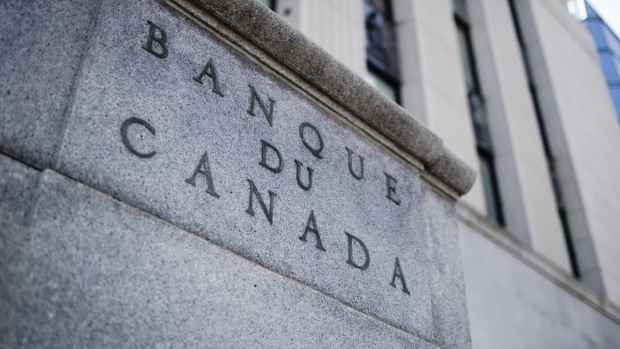TORONTO (Reuters) – Investors in Canada are shunning interest-rate sensitive stocks, seeking inflation protection and betting on a steeper yield curve as the Bank of Canada leads global central banks in shifting to a more hawkish stance.
Canada‘s central bank on Wednesday signaled it could hike interest rates as soon as next year and cut the pace of bond purchases, becoming one of the first major central banks to reduce stimulus.
Investors say they have been adjusting portfolios for some time to prepare for a higher rates outlook, but the BoC’s move has reinforced the focus on such an outcome.
“The fact that the Bank of Canada is now starting to take the foot off the gas… it is the first sign of what’s going to happen and be the big story for the second half of the year,” said Greg Taylor, a portfolio manager at Purpose Investments.
Taylor expects other central banks to follow the Bank of Canada‘s lead, making it more difficult for stock markets to rise later in 2021. Higher rates reduce the value of the future cash flows equities produce.
AGF Investments portfolio manager Mike Archibald is overweight technology shares and cyclicals, such as industrials and consumer discretionary, while underweight defensive sectors, including telecommunications, consumer staples and utilities.
“I am underweight (defensives) both on the expectation of better growth in the next 6-12 months as well as higher yields over time,” Archibald said.
Rising bond yields crimp the appeal of the high dividends defensive stocks tend to pay.
The Bank of Canada expects Canada‘s economy to grow 6.5% in 2021 and inflation to move over the coming months to the top of its 1% to 3% target range.
With inflation expectations rising, buying commodities could benefit a portfolio, said Michael White, a portfolio manager at Picton Mahoney Asset Management.
“Things like industrial metals and energy… you get the benefit of positive performance when economies are generally growing but they are also sensitive to inflation,” he said.
A more hawkish Bank of Canada has bolstered the Canadian dollar CAD=, and James Athey, investment director at Aberdeen Standard Investments in London is among investors who bought the currency on Wednesday, when it touched a one-month high at 1.2455 per U.S. dollar, or 80.29 U.S. cents.
He has also been betting that Canada‘s long-term yields will rise more than short-term yields, or that the curve will steepen.
That trade remains appropriate “as reducing asset purchases will happen a lot sooner and more easily than moving to tightening via higher rates,” Athey said.
The proposal in Monday’s federal budget to raise the share of long-term bond issuance to 42% from 15% before the crisis could also lead to a steeper curve, said Earl Davis, head of fixed income and money markets at BMO Global Asset Management.
While a punishing third wave of the coronavirus pandemic creates a headwind for Canada‘s economy, it may not change the big picture on the rate outlook.
“We believe this third wave and the renewed lockdowns are disruptive events to the economy but not destructive,” said Philip Petursson, chief investment strategist at Manulife Investment Management.
(Reporting by Fergal Smith; Editing by Dan Grebler)
Related

























